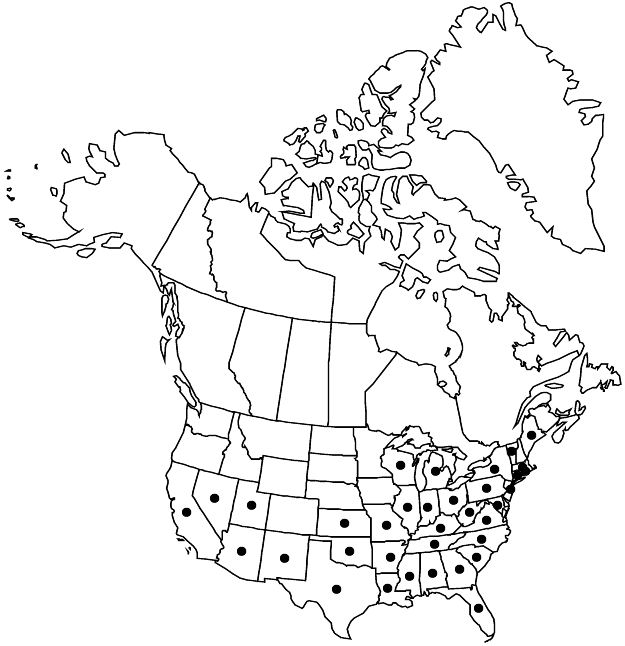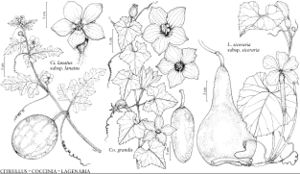Citrullus lanatus subsp. lanatus
Vines annual. Stems climbing or trailing, 50–200 cm, villous; roots fibrous; tendrils 2–3-branched. Leaf-blades ovate to lanceolate-ovate or ovate-triangular, mostly 8–20 cm, 3–5-lobed, lobes pinnately shallowly sinuate-lobulate, margins denticulate, surfaces hirsute abaxially, hispid on veins and veinlets, glabrous or scabrous adaxially with translucent dots. Flowers: hypanthium broadly campanulate; sepals lanceolate, 3–5 mm; petals obovate-oblong to widely oblanceolate, 7–16 mm. Pepos green, mottled with paler green and yellowish to whitish stripes, globose to oblong-ellipsoid, 12–35+ cm diam.; rind tough, not durable, mesocarp red to orange, yellow, or greenish, juicy, sweet. Seeds usually black, rarely red or of different shades, ovoid to oblong-ovoid, 7–15 mm. 2n = 22.
Phenology: Flowering Jun–Nov.
Habitat: Gardens, fields, vacant lots, trash heaps, dumps, roadsides, clearings in woods, gravel bars, stream banks, riparian thickets, dunes, volunteering from past plantings
Elevation: 10–400 m
Distribution

Introduced; Ala., Ariz., Ark., Calif., Conn., Fla., Ga., Ill., Ind., Kans., Ky., La., Maine, Md., Mass., Mich., Miss., Mo., Nev., N.J., N.Mex., N.Y., N.C., Ohio, Okla., Pa., R.I., S.C., Tenn., Tex., Utah, Vt., Va., W.Va., Wis., Asia, Africa, also in Mexico, West Indies, Central America, South America, Europe, Australia
Discussion
Selected References
None.
